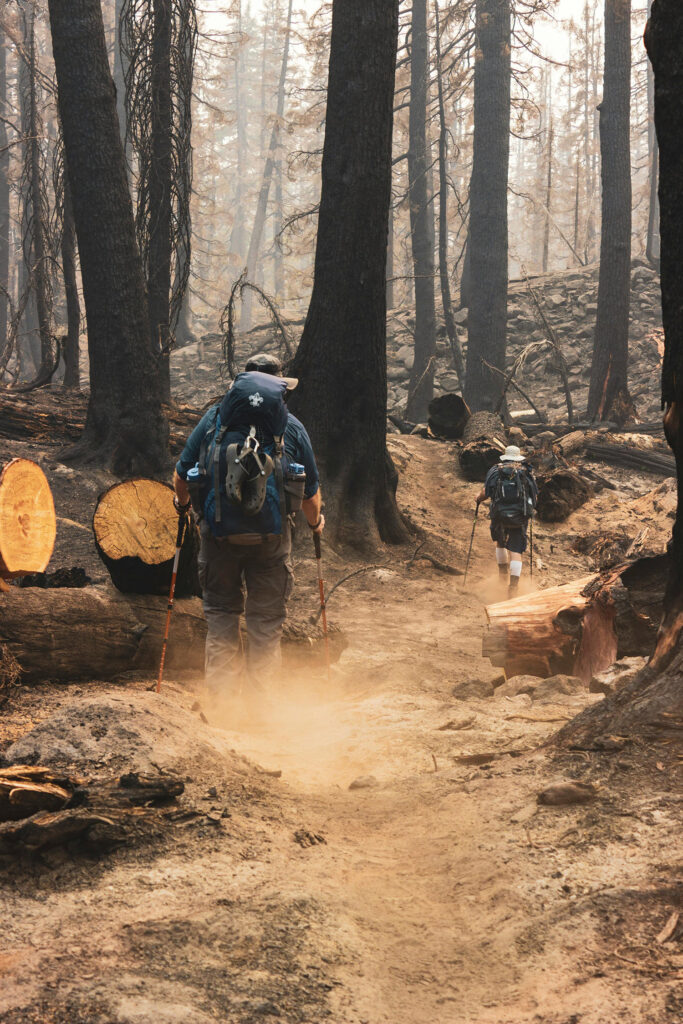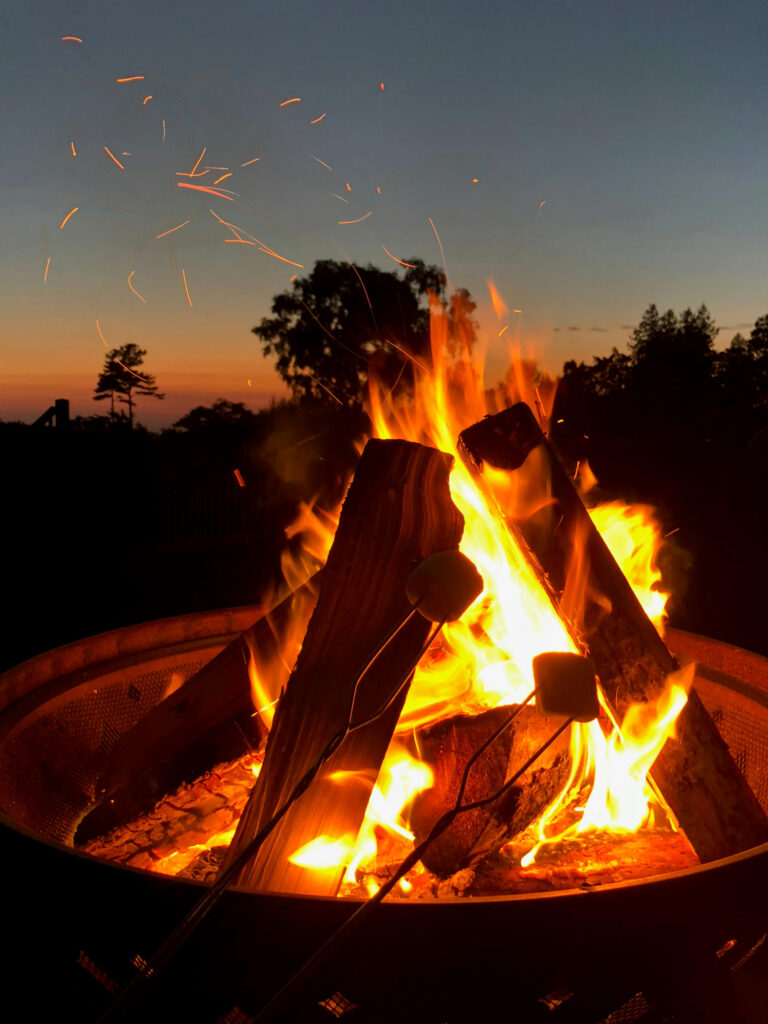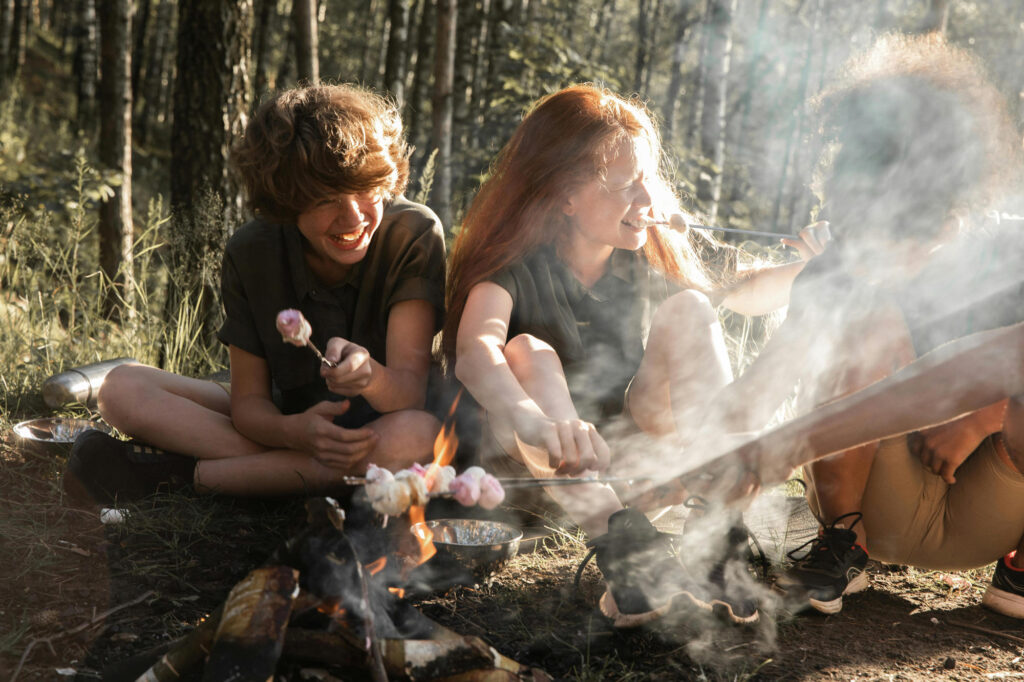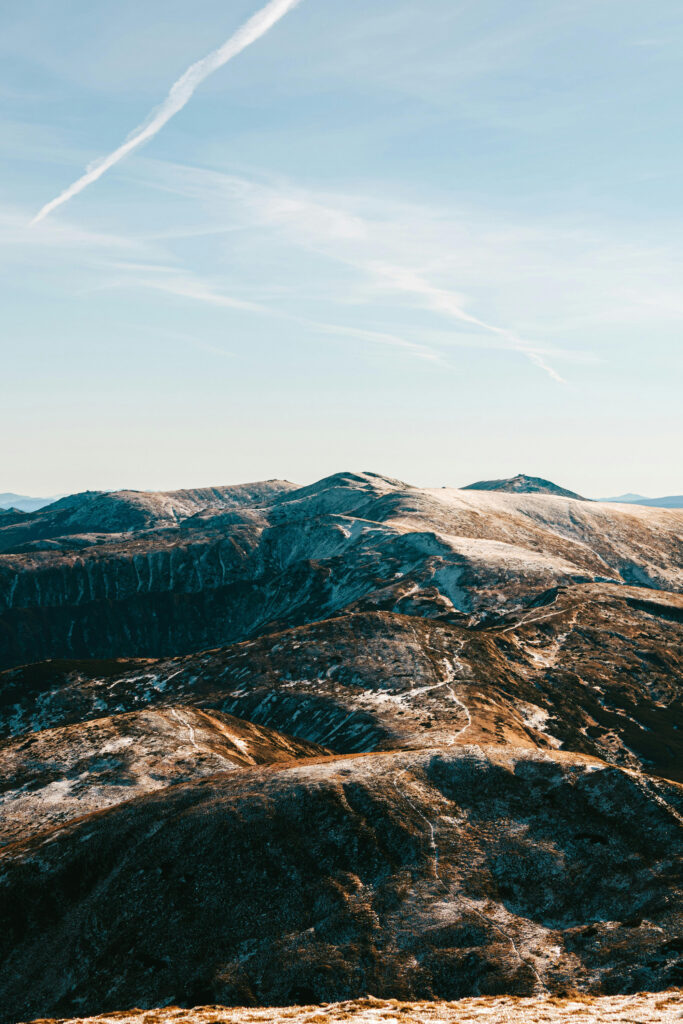
Many of us live in the Mountain West region because we love hiking, camping, biking, swimming, climbing, and generally being outside with our families. However, each year it seems like we are seeing longer, more severe wildfire seasons, which can really dampen the magic that the mountains offer. Instead of lacing up our hiking boots or packing our tents in an attempt to create lasting memories, we are left questioning if it’s actually safe to recreate outside with our kids.
Unfortunately, our “new normal” is to expect severe wildfires and air quality alerts every summer. But the wildfire season has extended so long in recent years that it’s no longer just during the summer. They now happen during almost every month of the year. Here is a map that shows wildfires burning now. However, this doesn’t necessarily mean that we have to hole up inside all the time, or even during the peak summer season! Instead, we can learn how to mitigate impacts to our health during the worst peaks of wildfire season and adapt to continue enjoying all the beauty the mountains have to offer us and pass on our love for the outdoors to the next generation.
The connection between climate change, drought, and fire
The water crisis in the Mountain West region has essentially placed us on the front lines of climate change in the U.S. Over the last several decades, the hotter, drier conditions caused by climate change have increased the length and severity of wildfire seasons. In fact, a 2021 study supported by the National Oceanic and Atmospheric Administration (NOAA) has shown that we can point to climate change as a primary driver for the increase in wildfire activity in the Western U.S.
Climate change has directly caused a decrease in average annual snowfall, melting glaciers and snowpack, and warmer temperatures early in the springtime. These combined factors lead to a decreased water supply in the dead heat of summer, which typically causes wildfires to start more easily, burn hotter, and spread further.
As it stands now, we will likely see the impacts from climate change in the Mountain West region get worse before they get better. However, there are still ways that we can manage and adapt to these conditions for the health and safety of ourselves and our kids. One of those ways is understanding how to avoid human-caused wildfires.
Avoiding human-caused wildfires
Natural and spontaneous conditions out of our control, like severe heat and extended droughts, a lack of soil moisture, lightning, and a blanket of dry leaves can all spark a wildfire. However, research points to humans causing over 80% of wildfires from 1992-2012. To be good stewards of this land, then, means that it is our responsibility to avoid known causes of wildfires and to teach our children to do the same. Here are some ways to avoid starting a fire yourself:
- Always check fire conditions before entering the backcountry. If in doubt or unsure, err on the side of caution and do not start a campfire.
- If it is safe to build a campfire, do not leave it unattended. Completely drown your fire before leaving it – remembering that embers can remain hot and relight several hours after they’ve been put out.
- Never discard cigarette butts on a trail or anywhere in the backcountry. Dispose of all cigarette butts in the proper receptacles.
- Avoid fireworks and sparklers, especially in dry areas and in the late summer. A few minutes of fun is not worth the risk!
- Remember that fire is incredibly unpredictable. When burning trash or lawn debris, be sure to contain the fire well and have a plan in case things get out of hand.

Protecting your health during wildfire season
Now that we better understand why wildfire seasons of recent years have been more severe and what we can do to make sure we aren’t the direct cause of a wildfire, let’s shift our focus to how we can stay safe during wildfire season.
Wildfire smoke is pervasive and comprised of several pollutants. The primary pollutant that we’re concerned about when it comes to public health and air quality is called “particulate matter,” also known as PM2. It’s pretty much exactly what it sounds like – microscopic pollutant particles that are carried shocking distances through the air. They can easily pass through the nose into the lungs and cause both mild and serious health issues. They are primarily harmful to children under 18, pregnant women, older adults, anyone with a history of respiratory or cardiovascular illnesses, those who work outdoors, and those of lower socio-economic status. Larger particles may not enter the body, but they can still be irritants to your nose, eyes, and throat.
To help reduce the health impacts of air pollution, make sure you have a high-energy particulate air (HEPA) filter installed in your home. You can either purchase standalone filters and place one or more throughout your home or have a filter installed directly into your HVAC system.
When headed outside, one of your best adaptative tools to help protect yourself and your family from the impacts of increasingly severe wildfire seasons is knowing how to check your local Air Quality Index (AQI). AQI, a tool used by the U.S. Environmental Protection Agency (EPA) uses a 0-500 scale to measure and report the level of air pollution and health concern in a given area, with higher values indicating worse conditions. At a glance, the ranges are:
- Green: Good, 0 to 50
- Yellow: Moderate, 51 to 100
- Orange: Unhealthy for sensitive groups, 101 to 150
- Red: Unhealthy, 151 to 200
- Purple: Very unhealthy, 201 to 300
- Maroon: Hazardous, 301 and higher
Generally, the EPA recommends that everyone should remain indoors when the AQI is 300 or above (i.e., “hazardous”). Children, active adults, and people with respiratory disease should limit outdoor time when the AQI is over 100, per the American Lung Association. However, you will need to determine what is the best decision for your family depending on the density of wildfire smoke and other air pollutants before venturing into the great outdoors. The AirNow Fire and Smoke Map is a great resource for checking air quality before heading out into the mountains.

Be wildfire smart
Continuing to enjoy summertime in the mountains and passing that love on to our kids is still possible, even when it seems like wildfire smoke is dictating our summer activity planning decisions. We can become wildfire smart ourselves and teach our kids how to properly manage campfires and other hazardous activities.
If you haven’t already, you can also sign up for the Mountain Mamas email list to hear about ways to engage in helping reduce the worst impacts of climate change, which can reduce the severity of wildfires. Our individual actions matter, but when we join our voices together we can create the change we want to see and leave it all just a little better than we found it.
Sources:
https://fire.airnow.gov/
https://www.epa.gov/climate-indicators/climate-change-indicators-wildfires
https://www.pnas.org/doi/10.1073/pnas.2111875118#executive-summary-abstract
https://www.noaa.gov/noaa-wildfire/wildfire-climate-connection
https://www.epa.gov/wildfire-smoke-course/why-wildfire-smoke-health-concern
https://www.cpr.org/2024/08/01/how-wildfire-smoke-affects-people/?utm_medium=email&utm_source=lookout&utm_campaign=lookout20240802
https://www.smithsonianmag.com/smart-news/study-shows-84-wildfires-caused-humans-180962315/
https://www.c2es.org/content/wildfires-and-climate-change/



